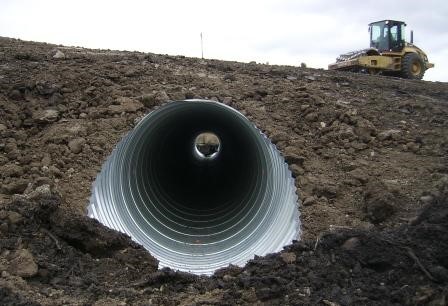Trusted Pad Construction for Your Task Requirements
Trusted Pad Construction for Your Task Requirements
Blog Article
Culvert Installation Facilitated: Step-by-Step Overview for Success
Setting up culverts may appear like a simple job, yet making certain a successful outcome requires careful planning and implementation. From picking the appropriate culvert dimension to incorporating proper water drainage steps, each action in the installment process plays an essential function in the functionality and long life of the culvert system. By adhering to a methodical technique and paying focus to key information, the installation can proceed efficiently, minimizing prospective concerns down the line. Remain tuned to reveal the important steps and considerations that can make culvert setup a seamless and successful undertaking.
Picking the Right Culvert Dimension
Choosing the appropriate culvert size is essential for making certain effective water flow and architectural stability in culvert installment projects - Pad Construction. The dimension of the culvert straight impacts the circulation capacity of water with the structure. A culvert that is as well tiny can lead to flooding and overflow, while one that is too large may cause reduced water speed, potentially causing sediment build-up and blockages
To figure out the ideal culvert dimension, variables such as the watershed location, height circulation rates, and hydraulic effectiveness demand to be thoroughly thought about. Estimations based on these criteria assist in selecting a dimension that can sufficiently deal with the anticipated water quantity while minimizing the risk of obstructions and structural failure.
It is important to get in touch with engineering standards and standards to make certain that the picked culvert dimension fulfills the project needs and local policies (Pad Construction). By choosing the appropriate culvert dimension, project managers can optimize water flow, avoid possible concerns, and boost the general effectiveness and long life of the culvert setup
Preparing the Installment Website
Effective culvert installation demands meticulous prep work of the installation site to ensure ideal architectural support and capability. Before starting the installation process, it is crucial to clear the site of any type of debris, plant life, or blockages that might restrain the culvert's placement.
Furthermore, it is necessary to think about aspects such as soil structure, groundwater degrees, and environmental influences when preparing the installation website. Carrying out a detailed site assessment can help identify any kind of prospective difficulties or risks that might impact the culvert's performance. By taking the time to prepare the installment website correctly, you can aid guarantee a successful culvert installment that meets architectural requirements and guarantees lasting functionality.
Placing the Culvert Properly

The quality at which the culvert is positioned is essential for keeping an appropriate slope for water flow. Furthermore, the culvert needs to be oriented correctly to make certain that the inlet and outlet are in the correct places. Pad Construction.
Backfilling and Condensing the Soil
Correct backfilling and compaction of the soil around the culvert is vital to ensure stability and protect against potential concerns in the future. Once the culvert is properly positioned, the following crucial step is to backfill the area around it with appropriate product. The backfill material ought to click here to find out more be devoid of rocks, debris, and raw material to avoid damage to the culvert. It is suggested to use granular product such as sand or gravel for backfilling, as it supplies good water drainage and compaction residential properties.
After placing the backfill material, it is essential to compact it in layers of consistent thickness. Utilizing a compactor or a mechanical tamper, compact the soil delicately to prevent harming the culvert. Compaction aids in lowering the chances of settlement and makes certain uniform support around the culvert. It is essential to compact the soil uniformly on all sides of the web link culvert to maintain its structural integrity.
Proper backfilling and compaction not only supply stability to the culvert however additionally help in stopping dirt erosion and preserving the longevity of the culvert system.
Guaranteeing Appropriate Drainage Assimilation
Integrating reliable drainage services plays an important function in the general capability and longevity of culvert installments. Correct water drainage assimilation is important for taking care of water circulation, stopping erosion, and making certain the architectural honesty of the culvert system. To achieve this, it is important to make a comprehensive water drainage strategy that considers factors such as the quantity of water anticipated, the topography of the location, and the kind of dirt present.

In addition, integrating attributes like disintegration control measures, such as riprap or vegetation, can further improve the effectiveness of the drain system. By thoroughly preparing and implementing these drainage solutions, culvert installments can operate successfully and endure the test of time.
Final Thought
In verdict, appropriate culvert setup is essential for maintaining effective drain systems. By choosing the ideal culvert dimension, preparing the installment site, putting the culvert correctly, backfilling and condensing the soil, and guaranteeing correct water drainage integration, success can be accomplished. Following these steps will aid guarantee the durability and performance of the culvert, inevitably contributing to the overall success of the drainage system.
Report this page